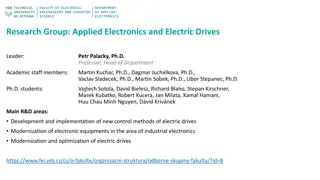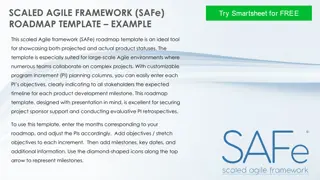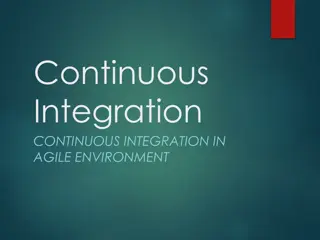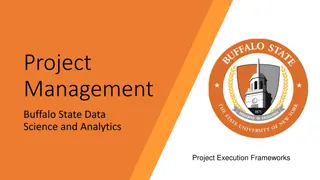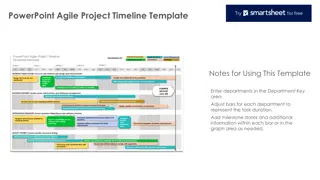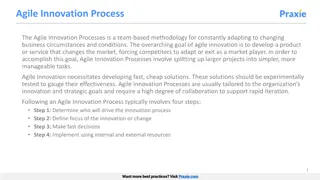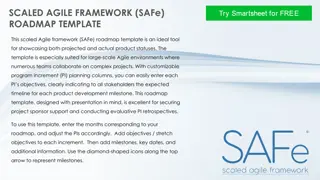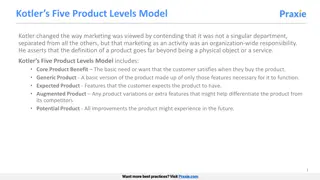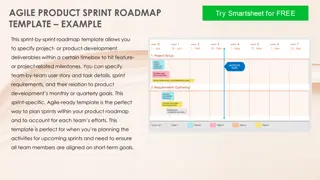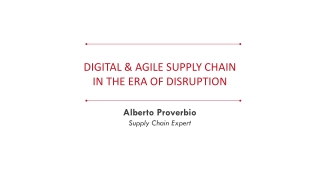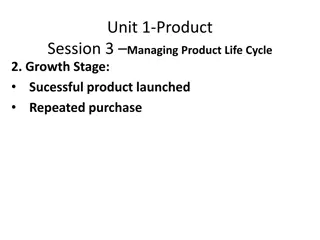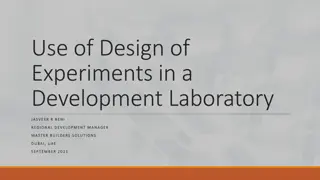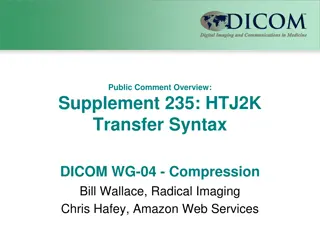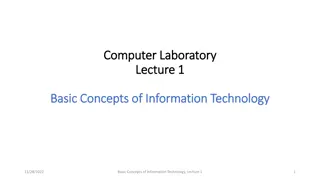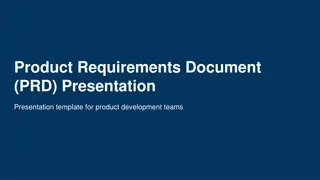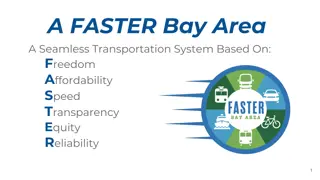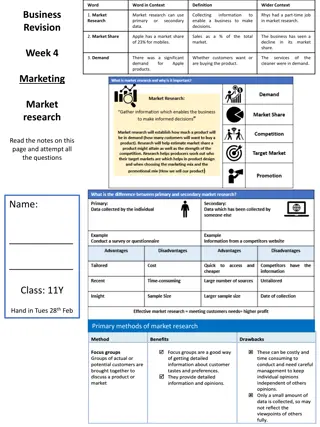
How Agile Product Development Drives Faster Time to Market
Agile product development has emerged as a solution, helping organizations deliver products faster without sacrificing quality or customer satisfaction.
Download Presentation

Please find below an Image/Link to download the presentation.
The content on the website is provided AS IS for your information and personal use only. It may not be sold, licensed, or shared on other websites without obtaining consent from the author. Download presentation by click this link. If you encounter any issues during the download, it is possible that the publisher has removed the file from their server.
E N D
Presentation Transcript
How Agile Product Development Drives Faster Time to Market In today s hyper-competitive business landscape, speed is a critical factor for success. Companies are under pressure to develop and launch products quickly, adapt to customer needs, and respond to market changes. Agile product development has emerged as a solution, helping organizations deliver products faster without sacrificing quality or customer satisfaction. But how exactly does Agile accelerate time to market? Let s explore how Agile drives speed while maintaining flexibility and quality. What is Agile Product Development? Agile product development is an iterative and incremental approach that breaks down the development process into smaller, manageable tasks known as sprints. Unlike traditional methods like Waterfall, which rely on sequential stages, Agile allows for constant feedback, collaboration, and flexibility. This approach empowers teams to respond to changes quickly and deliver working products more frequently. Key Ways Agile Accelerates Time to Market 1. Iterative Development and Early Releases In Agile, product development is broken into smaller iterations, each typically lasting 1-4 weeks. By focusing on smaller, incremental improvements, teams can build, test, and release parts of the product faster. This iterative process enables the release of a Minimum Viable Product (MVP) early in the development cycle, allowing companies to deliver value to customers quickly while continuing to refine the product. Releasing early also provides opportunities to gather real-time feedback from users. This feedback helps teams focus on what s working and address issues promptly, preventing delays and ensuring that the product evolves in the right direction. 2. Faster Feedback Loops One of the cornerstones of Agile is continuous feedback. In traditional models, feedback often comes too late after months of development making it costly and time-consuming to make changes. In Agile, however, feedback is collected at every iteration or sprint. By shortening the feedback loop, teams can detect issues, gather user input, and refine features more quickly. This rapid feedback reduces the risk of developing features that don t meet customer needs, ensuring that time and resources are spent on high-value tasks. It also allows teams to adapt to market changes or new opportunities, further speeding up product development. 3. Cross-Functional Collaboration Agile promotes cross-functional teams, where developers, designers, testers, and stakeholders collaborate closely throughout the development process. This collaboration eliminates the silos typically found in traditional development models, where handoffs between departments cause delays and miscommunication.
By working together from the start, teams can identify potential issues, share insights, and make decisions faster. This streamlined collaboration reduces bottlenecks, shortens approval cycles, and ensures that everyone is aligned with the project s goals, resulting in faster delivery. 4. Focus on Prioritization In Agile, product features are ranked and prioritized based on their value to the customer and the business. Teams focus on delivering the most important features first, ensuring that high-priority elements are completed early in the development process. This prevents time from being wasted on low-priority features or unnecessary work. Agile s focus on prioritization also means that teams are not bogged down by complex, long-term planning. Instead, they adapt and refine the product based on real-time data, which accelerates the overall pace of development. 5. Continuous Integration and Automation Agile emphasizes continuous integration (CI) and test automation, both of which play a crucial role in speeding up development. CI allows developers to integrate code into a shared repository frequently, often multiple times a day. Automated testing tools then run tests on the integrated code, ensuring that bugs are caught early and the product remains stable. This automated process significantly reduces the time spent on manual testing and debugging, allowing teams to release updates faster and more frequently. Continuous integration also ensures that the product is always in a deployable state, ready to be released to customers. Conclusion Agile product development is designed to drive speed, flexibility, and efficiency. By embracing iterative development, fostering cross-functional collaboration, and focusing on rapid feedback, Agile enables organizations to bring products to market faster. Continuous integration, automation, and strategic prioritization further enhance the speed of delivery. In a world where customer needs and market conditions are constantly evolving, Agile s ability to adapt and respond quickly gives businesses a competitive edge. By adopting Agile practices, companies can accelerate time to market without sacrificing quality, ensuring that they stay ahead in today s fast-paced environment. Read More: https://techhorizonsolutions.blogspot.com/2024/09/how-agile-product-development- drives.html




